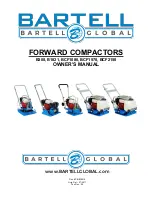
15
5)
Never over fuse. A 220/208 volt unit should be fused at 20 amps. A 440/480 volt unit should be fused
at 10 amps.
6)
Wear protective clothing including safety glasses, helmet and steel toe shoes when changing a
dumpster or servicing the compactor. If the system is not protected by “Electrical Interlocked Doors”
interfaced to the control system, glass and other materials can still be dropped down the collection
chute.
Compactor safety is addressed by two agencies. Below is a summary of their requirements.
Occupational Health and Safety Act (OSHA) Appendix A
OSHS (Occupational Health and Safety Act) is a stringent and specific set of requirements that affect practically
every workplace in the United States. Specifically, Section 5 of the Act requires the following:
“Each employer
-
(1) shall furnish, to each of his employees, a place of employment which is free from recognized
hazards that are causing or are likely to cause death or serious physical harm to these employees.
(2) shall comply with occupational safety and health standards promulgated under this Act.
This obligation must be emphasized! It has been ruled that a violation of OSHA standards has been held to be
evidence of negligence in a state court ruling against an employer for injury
even to a non-employee third
person
.
ANSI Requirements (Z245.1 1984 and A12.1-1973)
ANSI Standards (American National Standard Institute) clearly identify the standards of care and performance
that the employer must follow, and that the employee should follow. The “stationary compactor” referenced
in the following excerpts is typically the “apartment house” compactor
- the CP1/CP2 compactors fall into this
category.
Stationary Compaction Equipment
The employer shall be responsible for:
1.
Ensuring that the installation of stationary compactors is in conformance with local codes,
ordinances and manufacturer’s recommendation.
2.
Providing for instruction and training in safe methods of work to employees before assigning them
to operate, clean, service, maintain or repair the equipment.
3.
Monitoring the employee’s operation of stationary compactors and taking appropriate action to
ensure proper use of equipment, including adherence to safe practices.
4.
Repairing any mechanical malfunction or breakdown that effects the safe operation of the
equipment.



































